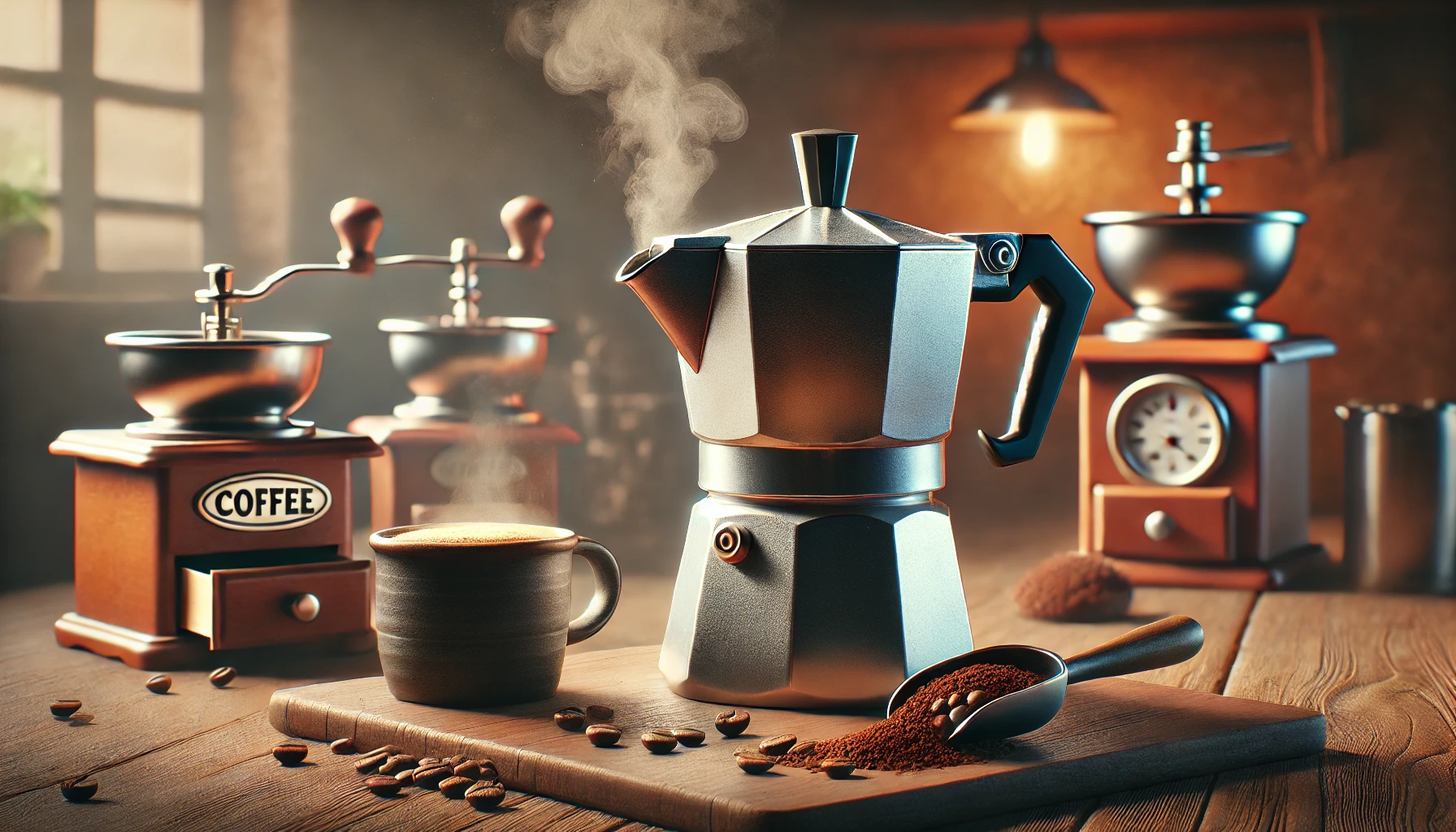The Moka pot is a classic stovetop brewer that has earned a loyal following for its ability to produce rich, strong, espresso-style coffee without the need for an expensive machine. Invented in Italy in the 1930s, it remains a staple in households around the world—especially in Europe and Latin America.
In this guide, you’ll learn how the Moka pot works, how to brew with it properly, and how to get the best-tasting results every time.
Why Use a Moka Pot?
- Bold flavor: Produces coffee with body and strength similar to espresso
- Affordable and durable: No electricity or fancy equipment needed
- Compact and portable: Ideal for home, travel, or camping
- Timeless design: Stylish and iconic, often passed down through generations
Perfect for those who love espresso-based drinks like lattes, cappuccinos, or americanos—but want a more accessible option at home.
What Is a Moka Pot?
Also known as a stovetop espresso maker, the Moka pot brews coffee by passing pressurized steam through finely ground coffee.
It has three chambers:
- Bottom chamber (for water)
- Filter basket (for coffee grounds)
- Top chamber (where brewed coffee collects)
As the water heats, pressure builds and pushes steam up through the grounds, extracting flavor and depositing the brewed coffee into the top.
What You’ll Need
- A Moka pot (usually made of aluminum or stainless steel)
- Freshly ground coffee (fine-medium grind, between drip and espresso)
- Filtered water
- A kettle (optional but recommended for pre-heating water)
- A stove (gas or electric)
Step-by-Step: How to Brew with a Moka Pot
Step 1: Heat Your Water
For better taste, start with pre-heated water instead of cold. This reduces the time your coffee sits on the heat, minimizing bitterness from over-extraction.
Step 2: Add Water to the Bottom Chamber
Fill the bottom chamber up to the safety valve (never above it). Use filtered hot water for best results.
Step 3: Fill the Filter Basket with Coffee
- Use a fine-medium grind—not as fine as espresso
- Fill the basket evenly and level it off (no need to tamp)
- Place the basket into the bottom chamber
Step 4: Assemble and Brew
- Screw the top chamber onto the base (careful, it may be hot)
- Place the pot on the stove over medium heat
- Leave the lid open and listen for bubbling or gurgling sounds
When you hear a hissing or sputtering sound, your coffee is almost done. Remove it from heat immediately to avoid burning the brew.
Step 5: Cool and Serve
- Optional: Place the bottom chamber under cold water to stop extraction
- Pour the brewed coffee into your favorite cup
- Enjoy straight, or mix with milk, hot water, or foam
Moka Pot Brewing Tips
- Don’t tamp the coffee like espresso—it can block pressure
- Use fresh, quality beans for the best flavor
- Clean the pot after each use with warm water (no soap on aluminum)
- Store disassembled and dry to prevent corrosion or buildup
- Replace the rubber gasket and filter plate if they wear out
What Kind of Coffee Does It Make?
Moka pot coffee is stronger than drip, but not as concentrated as true espresso. It has:
- Bold body
- Lower acidity
- Bittersweet notes, especially with dark roasts
- A slightly oily texture due to lack of paper filtration
It’s ideal for milk-based drinks and those who love intensity in their cup.
Best Coffee for Moka Pot
- Medium to dark roasts: For chocolaty, nutty, robust flavors
- Italian-style blends: Often include a touch of Robusta for crema
- Freshly ground coffee: Grind just before brewing for peak flavor
Avoid overly acidic or delicate single-origins—they can taste flat or imbalanced in this method.
Cleaning and Maintenance
After each use:
- Let the pot cool
- Rinse all parts with hot water
- Don’t use soap (especially with aluminum pots)
- Dry thoroughly and store open to prevent odors or mold
Every few months, check the rubber gasket for wear and replace if needed.
Final Thoughts: Classic Flavor, Timeless Design
The Moka pot remains a favorite among coffee lovers for good reason—it’s affordable, dependable, and capable of producing truly satisfying coffee.
Whether you enjoy it black, as a base for lattes, or with a splash of cream, the Moka pot brings a touch of old-world elegance and boldness to your brewing routine.
So dust off that stovetop brewer, and enjoy a method that’s stood strong for nearly a century.
